The IUCN Africa Protected Areas Congress (APAC) is the first ever continent-wide gathering of African leaders, citizens, and interest groups to discuss the role of protected areas in conserving nature, safeguarding Africa’s iconic wildlife, delivering vital life-supporting ecosystem services, promoting sustainable development while conserving Africa’s cultural heritage and traditions.
Join us in Kigali, Rwanda, as we highlight BIOPAMA’s work through three dedicated pavilions around our Regional Observatories.
Regional Resource Hub Pavilion
The RRH serves 24 countries in the Eastern and Southern African (ESA) region and is hosted by the Regional Centre for Mapping of Resources for Development (RCMRD), based in Nairobi, Kenya. The Hub compiles and analyses relevant data and provides information to support field interventions, policy dialogues and decision-making processes at local, national and regional levels. The ESA RRH offers information management systems and tools, capacity building, knowledge sharing products and communication activities aiming to reinforce the management effectiveness and governance of protected areas and surrounding communities in Eastern and Southern Africa region. The ESA RRH includes a Regional Reference Information System (RRIS) that is free, secure and built using open source technologies. It hosts a broad range of data that can be stored and used, such as field data, indicators, satellite imagery, maps, photos, surveys and documents.
Download the RRH Pavilion Overview and Brochure here.
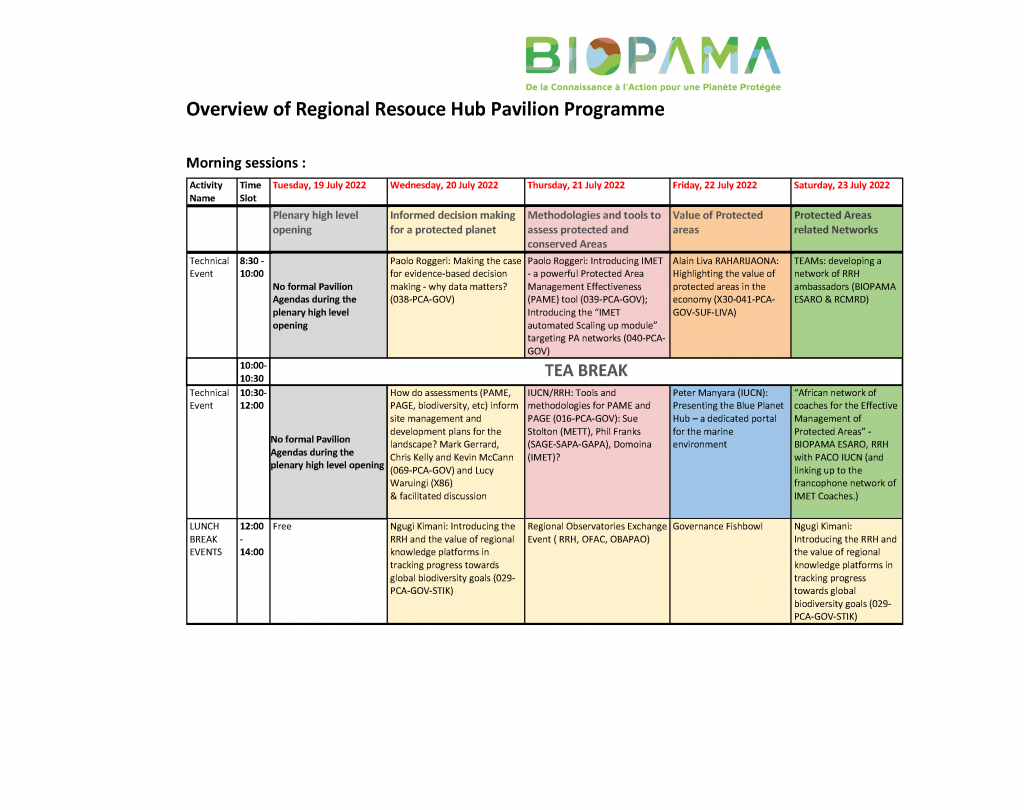
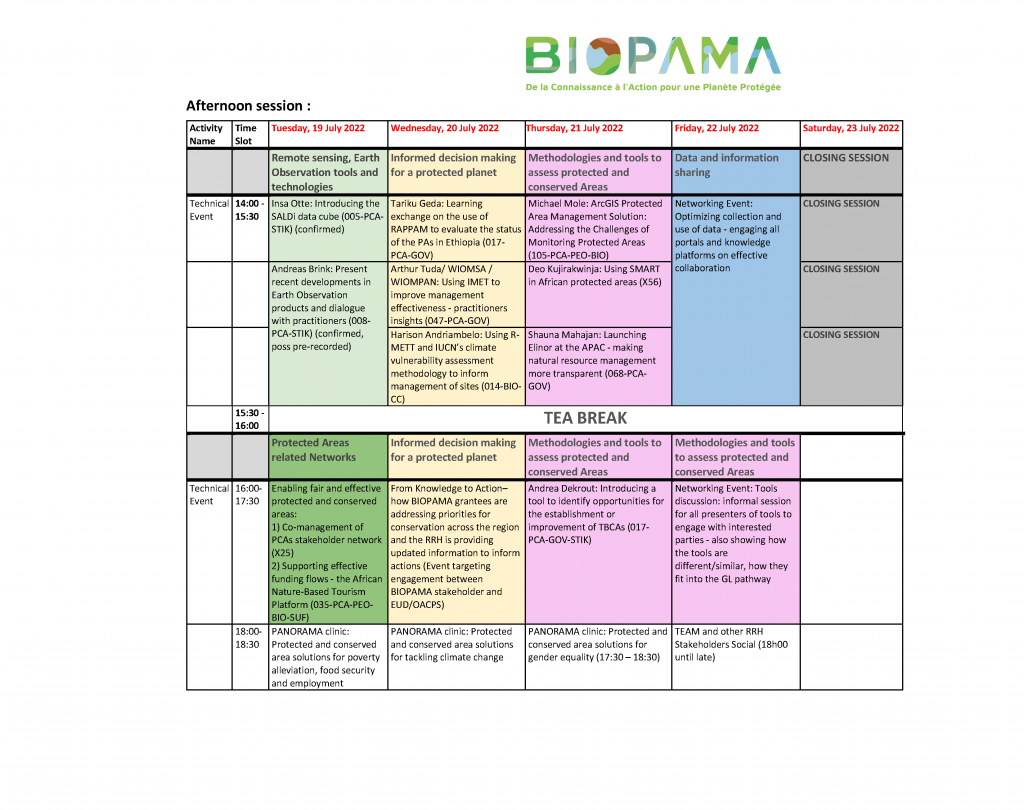
OBAPAO is a repository of data and information on biodiversity and protected areas in West Africa. The BIOPAMA Program, an initiative funded by the European Union, aims to build a solid information base for decision-making on protected areas and biodiversity in 79 countries of the African, Caribbean and Pacific (ACP) Group of States. Thus, at this West Africa Regional Reference Information System (RRIS), you will find maps, reports, data and other relevant information on the status of biodiversity and protected areas that you can download and use as needed. A wide range of environmental themes associated with related topics in biodiversity conservation and natural resource management are covered.
Download the OBAPAO Pavilion Overview and Brochure here.
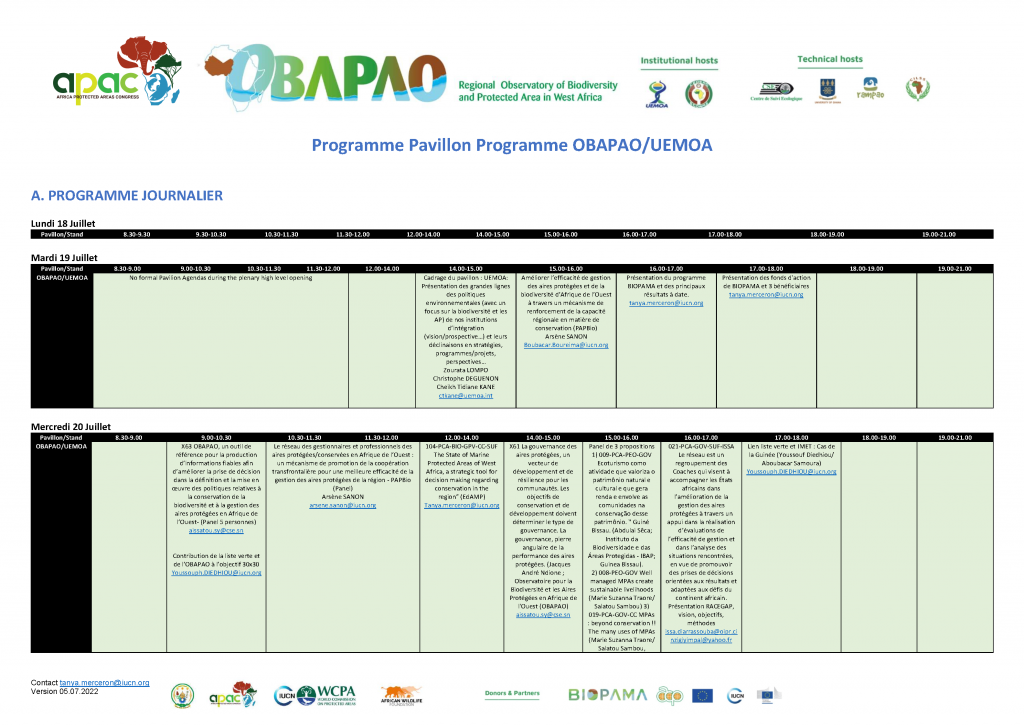
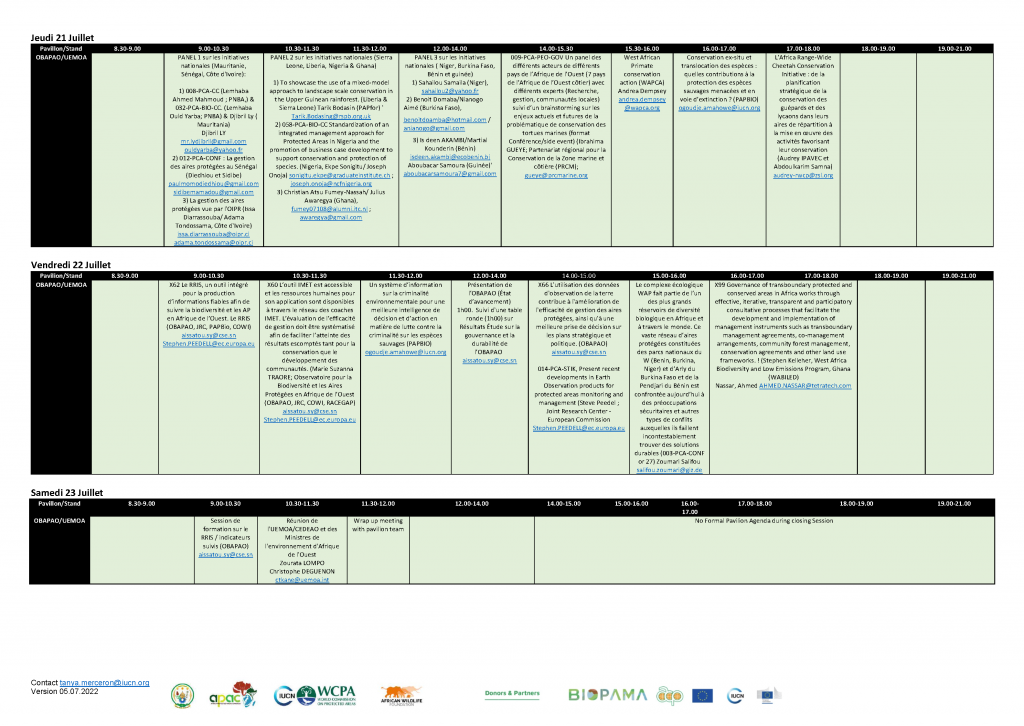
The Central Africa Forest Observatory (OFAC) was created in 2007 as a specialised unit of the Central African Forests Commission (Commission des forêts d’Afrique centrale COMIFAC) to provide the up-to-date, relevant data on the region’s forests and ecosystems that is needed for policy-making and to promote better governance and sustainable management of natural resources.
Download the COMIFAC Pavilion Overview and Brochure here.
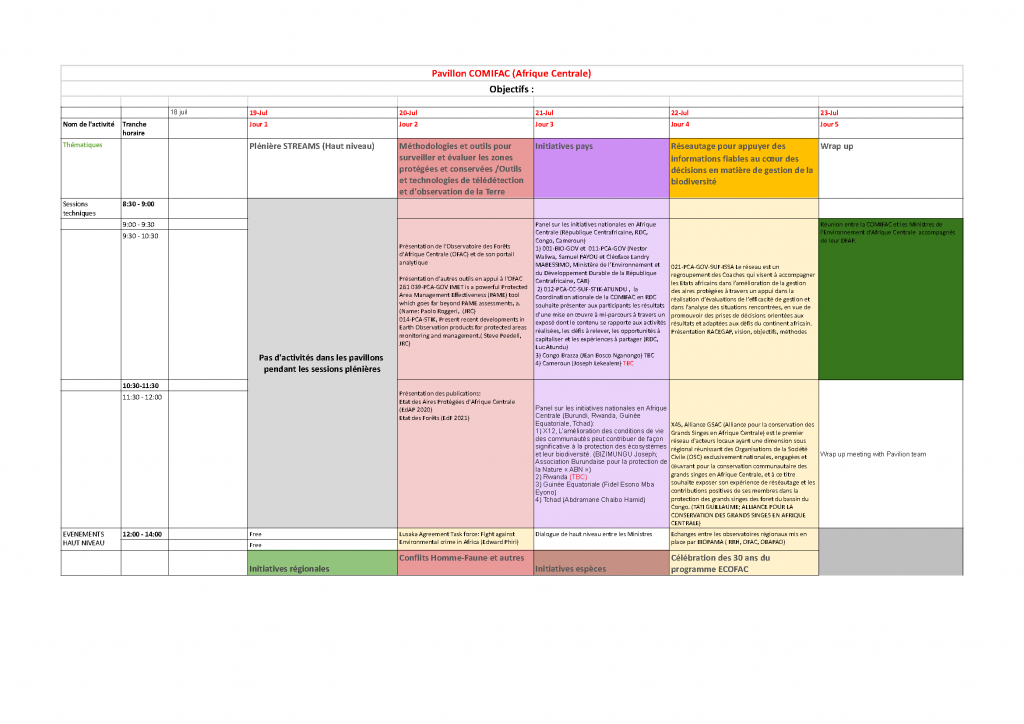
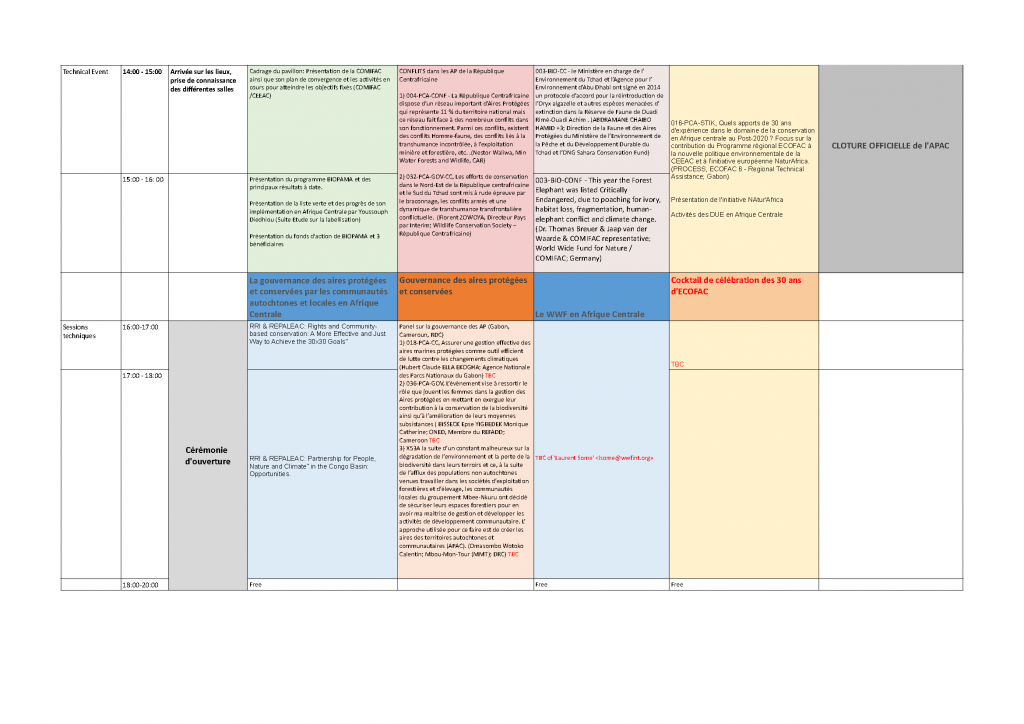
Related News

prev





